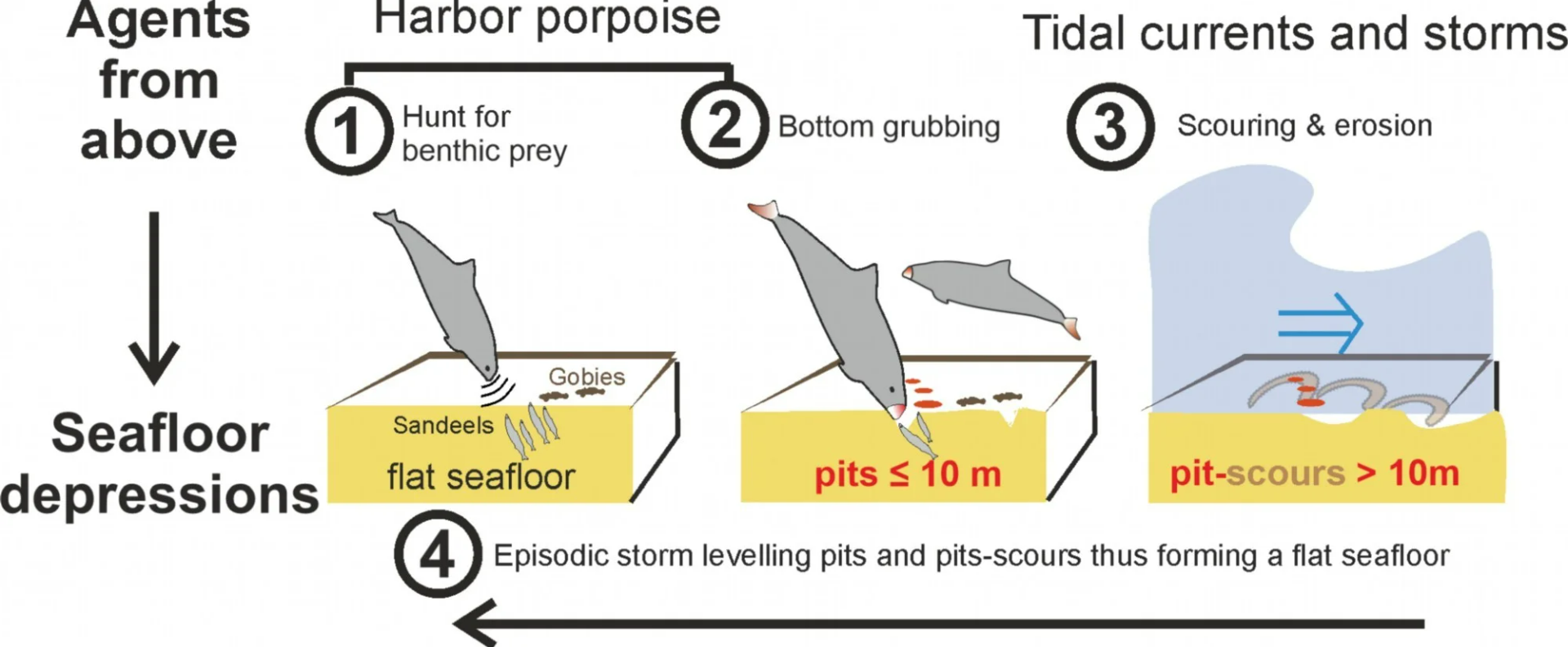The world’s seafloor is scattered with millions of mysterious pockmarks. It’s commonly held among scientists that these small pits were formed by fluids or methane gas leaking from the depths of Earth’s sediments, but a new study puts forward the idea that they were created by life.
And when we say “life,” we’re not just talking about mere microscopic organisms or tiny shellfish, but hungry marine mammals and their appetite for seafloor-dwelling fish.
Scientists at Kiel University in Germany studied the cookie-sized craters on the seafloor of the North Sea, where they estimate over 40,000 pockmarks can be found.
Their research indicates that they were created by large vertebrates rooting around the seafloor in search of prey. As they explain in the paper, the initial feeding pits serve as a nucleus for scouring and eventually develop into larger pits.
In the case of the North Sea, they argue that the most likely suspects are harbor porpoises hunting sand eels. However, even further afield in the rest of the world’s oceans, the pockmarks are likely to be caused by similar interactions between vertebrate animals.
“Our results show for the first time that these depressions occur in direct connection with the habitat and behavior of porpoises and sand eels and are not formed by rising fluids,” Dr Jens Schneider von Deimling, lead study author and geoscientist at Kiel University, said in a statement.

The harbor porpoise pits model schematically sketches the evolution of crater-like depressions through biological and oceanographic processes.
Image credit: © Schneider von Deimling, Hoffmann, Geersen et al., Communications Earth & Environment 2023
“Our high-resolution data provide a new interpretation for the formation of tens of thousands of pits on the North Sea seafloor, and we predict that the underlying mechanisms occur globally, but have been overseen until now,” Schneider von Deimling added.
To reach this conclusion, the team gathered new echosounder data and combined it with information about behavioral biology, physical oceanography, satellite remote sensing, and habitat mapping.
The work did not uncover any clear evidence of gas leaking, but it did reveal that the potential porpoise-feeding sites directly lined up with the location of the pits. This also paired up with other behavioral observations about the life and diet of porpoises.
“From analyses of the stomach contents of stranded porpoises, we know that sand eels are an important food source for the North Sea population,” explained Dr Anita Gilles from the TiHo-Institute for Terrestrial and Aquatic Wildlife Research in Büsum.
Harbor porpoises are relatively small, toothed cetaceans that are abundant off the coast of Germany in the North Sea. While it’s known they enjoy eating fish that dwell on the seafloor, their foraging behavior has not yet been observed in the wild. This study, the researchers say, could help to shed light on how they find and feast on their prey.
This plucky species of cetacean is only found in cooler coastal waters of the North Atlantic, North Pacific, and the Black Sea. So what does that mean for the millions of seabed pockmarks across the globe? The researchers speculate that several other seafloor hunters are likely to be responsible, whether it’s gray whales and bottlenose dolphins or harbor seals and walruses.
If these conclusions are on the money, the study provides yet another good reason why we should protect the seafloor and be cautious about where we place offshore wind farms (not to mention where we mine for rare minerals).
“Our results have far-reaching implications from a geological and biological perspective. They can help to assess the ecological risks associated with the expansion of renewable energies in the offshore sector and thus improve marine environmental protection,” concluded Schneider von Deimling.
The study is published in the journal Communications Earth & Environment.
Source Link: Millions Of Mysterious Seafloor Pits May Have Been Formed By Life